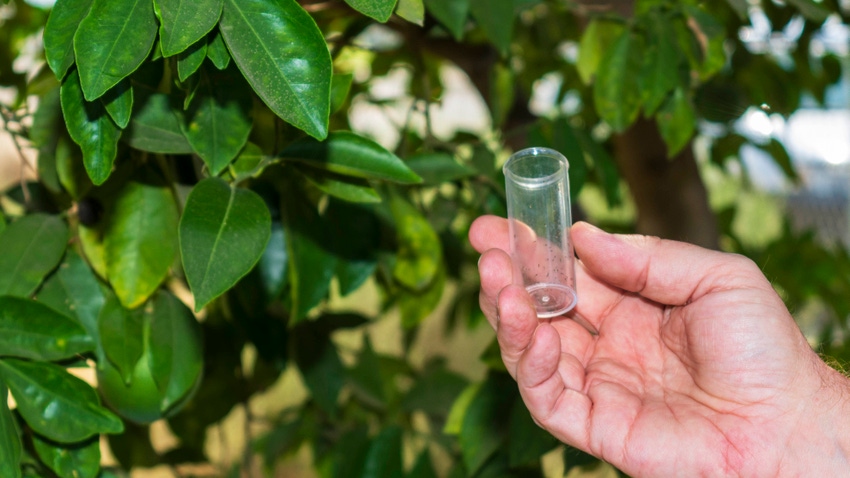
Has California’s citrus industry turned a corner in its fight against the Asian citrus psyllid?
While the raw numbers of diseased trees across southern California’s urban landscape may be daunting, a university researcher studying the invasive insect since it arrived in California believes the battle can be won without expensive insecticide programs.
Mark Hoddle, an entomologist with the University of California, Riverside, has spent much of his career working on the natural enemies of various insects to control invasive pests. Hoddle believes that the fatal citrus disease Huanglongbing (HLB) will not become the catastrophe for California citrus farmers that it did in Florida because of what he and others are learning from integrated pest management (IPM) surveys and studies.
IPM success story
Several years ago, Hoddle won approval from U.S. officials to import Tamarixia radiata, a tiny parasitic wasp from Pakistan. The insect was brought in to control ACP numbers as it appeared urban insecticide treatments were ineffective at controlling the invasive psyllid.
“This was a multi-year, multi-million dollar project, and it failed,” said Hoddle of the state’s insecticide programs aimed at eradicating the ACP.
Hoddle’s integrated pest management efforts largely worked as the tiny wasp was successful in reducing the number of ACP in residential neighborhoods. As of 2022, more than 23 million Tamarixia releases have been made in California, according to Hoddle.
It wasn’t a complete success, however. Hoddle and others quickly discovered that the Argentine Ant is highly protective of the sugar excretions of ACP nymphs and will reduce the parasitism of Tamarixia by attacking and killing the wasp, which is smaller than the adult ACP, and much smaller than the Argentine ant.
Hoddle has the data to show that the Tamarixia can significantly reduce ACP numbers, absent the Argentine Ant. He recently discovered yet another beneficial insect that seems to have an even greater impact on reducing ACP numbers.
Hoddle told citrus farmers in Arizona recently that syrphid fly species, or Allograpta nymphs, are highly effective at consuming ACP nymph colonies. These flies are likely native to California, he said.
“We can boost the presence and impacts of these flies with small plantings of alyssum, which is highly attractive, and provide pollen for egg maturation and nectar for energy,” he said.
Alyssum is a genus of more than 100 species of flowering Brassicaceae plants.
UC Riverside studies
Studies from over 19,000 hours of video recordings by researchers from UC Riverside revealed that syrphid fly nymphs were about twice as effective at killing ACP nymphs than Tamarixia. A third insect predator killed about 12% of the ACP nymphs in the study.
“Natural enemies have achieved far greater levels of suppression over much vaster areas far more cheaply and sustainably than was ever possible with the USDA-CDFA urban spray programs,” Hoddle told Western Farm Press.
Hoddle remains optimistic that the biocontrol efforts of ACP in California could prevent HLB from becoming a catastrophic issue in commercial citrus. As of mid-January, no confirmed cases of HLB have been reported in commercial citrus in California. This is likely due to the coordinated insecticide treatments by growers, based on University of California recommendations.
Eleven years after the first HLB discovery in California, he believes “it is highly unlikely California citrus will be destroyed” by the disease.
Furthermore, Hoddle says the success of IPM programs in urban settings could lead California officials to discontinue ACP population density monitoring as many of the state’s study sites have been ACP-free for at least two years. The percentage of diseased trees across the urban landscape – to date over 7,200 non-commercial citrus trees were destroyed by state officials after testing positive for HLB – remains small in comparison to the estimated millions of citrus trees across southern California, Hoddle said.
About the Author(s)
You May Also Like






